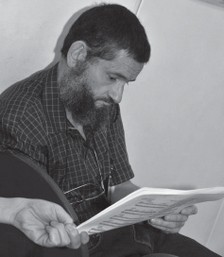
Miloš Zatkalik (1959, Serbia) is a composer and theoretician. He graduated with a degree in composition from the Faculty of Music in Belgrade, with Vasilije Mokranjac and Rajko Maksimović. He continued his education attending courses in the USA and the United Kingdom. He is a full professor and head of the Department of Music Theory at the Faculty of Music in Belgrade, and also teaches at the Academy of Arts in Banjaluka. He gave lectures in Canada, Norway, the USA, Slovenia, and Germany. Some of his important works include: orchestral pieces Minas Tirit, What’s He to Hecuba, Of Saralinda, Xingu and the Duke Swallowed by Golem – a fable for a large orchestra; chamber works The Mad Carriage-Greeter from Ch’s, Lost fragments II, As if Nothing Had Happened; works for chamber orchestra Lost fragments, Dum incerta petimus; solo music (for flute, viola, cello, piano) and songs with piano accompaniment. His pieces were performed in Germany, Spain, Russia, Canada, and the USA. He published papers in national and international journals and magazines, dealing with different areas, such as relations between music and literature/linguistics, analysis of the twentieth century music and psychoanalytical foundation of music analysis. He is the author of the first Serbian music analysis textbook in electronic form. Zatkalik is a member of the Managing Board of the Composers Association of Serbia and the Jury for the Mokranjac Award. He also earned a degree in the English language and literature at the Faculty of Philology in Belgrade. He was engaged in professional translation.
Four pieces that could not look any other way(Četiri komada koja nisu mogla drukčije izgledati)
These pieces could not look any other way. They could not look any other way because they are largely based on “assigned” scale patterns which limit the choice of pitches of the tones. They could not look any other way because in some places certain algorithms were used which generate exactly the type of rhythm which was written. They could not look any other way because they were written in a very short time, so there was no time to think about the final result. And they could not look any other way because the author wanted them to look exactly as they are.


